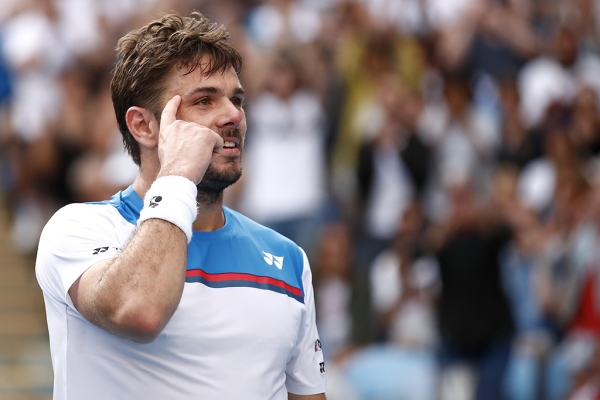Rather than a seminal victory, it was instead a loss that helped transform Stan Wawrinka into an Australian Open champion and Grand Slam giant.
The Swiss had led world No.1 Novak Djokovic 6-1 5-2 in the fourth round at Australian Open 2013 before losing 12-10 in the fifth. But he was not shattered; Wawrinka actually took confidence from the result.
It showed at the same tournament one year later, where he exacted revenge on Djokovic before beating Rafael Nadal to capture his first major title.
Now a three-time Slam winner, Wawrinka’s place in tennis’s Hall of Fame is practically ensured – a journey to greatness that arguably began at Melbourne Park.
Wawrinka v Djokovic: AO 2013
Wawrinka entered the 2013 season ranked 17th, a dependable player who would regularly reach the fourth round at majors yet mostly go no further.
He advanced to the same stage at AO 2013 but proved a player transformed, bullying Djokovic about the court for more than five hours in a match famous for its brutal intensity and stunning quality.
Defending champion Djokovic eventually subdued the Swiss, but Wawrinka departed with his belief surging. “I think it's by far my best match I ever play,” he stated.
“At the end I was really, really close. For sure I'm really sad. But I think there is more positive than negative.”
The season that followed
Wawrinka carried his Australian momentum throughout the year, reaching the Madrid Masters final and Roland Garros quarterfinals before advancing to his first major semifinal at the US Open.
There, Djokovic again thwarted him, but only after another bruising five-setter spanning more than four hours. And still Wawrinka’s belief was growing.
“In the Australian Open I had to play my best game to stay with him. Today I had the feeling when I was still fit … I had the match in control,” he observed.
Wawrinka later qualified for the eight-man ATP Finals and ended the season inside the top 10 – both career firsts.
Wawrinka v Djokovic: the rematch
Increasingly one of the more compelling match-ups in tennis, the Swiss and Serb clashed again at Rod Laver Arena, one year on from their incredible 2013 encounter.
Wawrinka was flying; he won the ATP Chennai title to begin 2014 then reached the AO quarterfinals to improve his winning streak to seven matches.
In another five-setter, Wawrinka overcame the three-time defending champion 2-6 6-4 6-2 3-6 9-7 to snap a 14-match losing streak against Djokovic.
“I don't want to lose every time in five set against Novak. I had to find solution,” Wawrinka said.
“I came on the court tonight with a lot of confidence in myself, knowing that if I play my best game, I always have a chance against him.”
Australian Open champion
That confidence shone through as his journey continued.
He next pipped Tomas Berdych in four sets to secure his first appearance in a Grand Slam final, where he notched his first ever victory over Rafael Nadal. Incredibly, he had never even won a set in 12 previous losses to the Spaniard.

His 6-3 6-2 3-6 6-3 victory over the top-ranked Nadal marked his first win against a world No.1, and made him the first player to beat the top two seeds at a Slam – the other being Djokovic – since 1993.
“It's quite crazy what's happening right now,” Wawrinka said.
“I never expect to win a Grand Slam. I never dream about that because for me, I was not good enough to beat those guys.”
The aftermath
He would go on to win two more, beating Djokovic in the finals of both Roland Garros in 2015 and the 2016 US Open to cement his name among the game’s modern greats.
He peaked at world No.3 with his AO victory and remained almost exclusively inside the top five for the next three-and-a-half years before a knee injury forced him to undergo surgery in 2017.
Falling outside the top 250 as a result, the Swiss veteran has since battled his way back inside the top 20.
